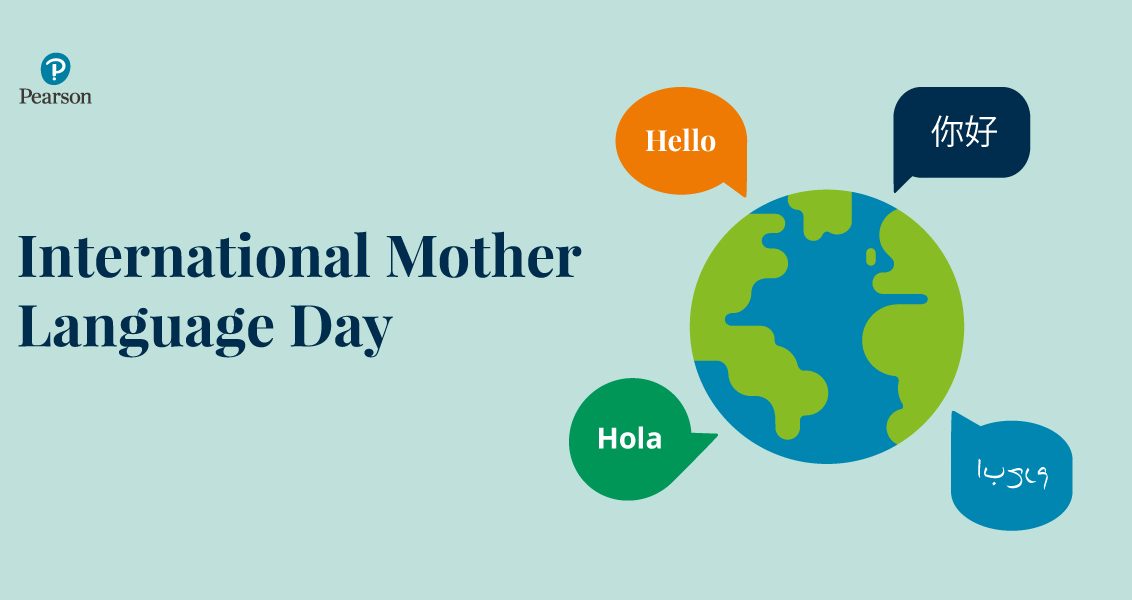
How are you celebrating International Mother Language Day this year? Here are some ideas for your classroom.
Since the year 2000, Unesco International Mother Language Day has been celebrated all over the world on 21st February to promote linguistic diversity and multilingualism.
This celebration is an opportunity to reflect on the role languages play in our lives and the importance of preserving linguistic diversity in the world and in our local communities. Every language is a window into a culture, a way of thinking, living and transmitting knowledge. Our multilingual classrooms are the ideal environment for discussing the importance of language in a child’s life with a view to fostering tolerance and respect.
The experience of learning and using multiple languages enriches a child’s life, and it is important for teachers as well as for pupils to reflect on the emotions and routines associated with the multilingual experience. To fully reap the benefits of a language celebration, it is essential to involve every pupil in the classroom and engage the whole school community. Language can be used as a tool to raise awareness of diversity because it is something we all share, but it is also something that can make us different from one another.
What activities can you do in the classroom to celebrate?
I am going to share with you two activities that I usually bring to Irish schools as part of the Language Explorers Initiative.
The Guessing Game
With younger children who may have limited literacy skills I like to play a guessing game. I tell the children to think of a word in a language other than English, and to try to select a word that others might find difficult to guess. If children say they don’t know any words in other languages, I ask them to think of typical Italian food and within seconds I see a smile on their face!
Children find this task very enjoyable and most of them have fun using their mother tongue in front of everyone. Some do find it embarrassing or unusual, because they may have never spoken the language in front of their friends, or they fear that some pupils will laugh at them. In this case, I ask the pupil to whisper the word in my ear and I say it out loud. When the child who says the word sees that the guesses are very far from the real meaning of the word, he soon realises that he is “the expert” in the room. This activity also elicits very interesting responses from the class, because the children’s guesses may be based on their knowledge of their own mother tongue or of foreign languages. These responses can be the start of a very interesting discussion about the similarities and differences between languages.
Something I like to do as part of this exercise is to get everyone to repeat the word that the child has said, to make children practise new and unfamiliar sounds. I tell them not be afraid of making mistakes or being judged for their pronunciation. This allows children to put themselves in the shoes of someone who is learning a language for the first time, and if practiced regularly it can address the issue of the fear connected with learning new languages.
The Multilingual City College
Another activity that pupils always enjoy is the “multilingual city collage”. I choose collage because it is an art technique that suits pupils at all ages and because it can be produced collaboratively.
I bring pictures of people that reflect the diversity of the environment we live in, of familiar buildings, local shops or landscapes, bilingual street signs or other typical urban landmarks that display interesting writing on them. I get pupils to work in groups of 3 or 4 with a very large sheet of paper. As with the guessing game, everyone is included, no matter how many languages they master. I tell the students that the collage should end up looking like a multilingual city, but I don’t give them much guidance. Pupils tend to guide the activity themselves, and make decisions within their small groups.
They use glue to stick buildings, people and road signs and then they put their own mark onto the paper. They invent their own road signs, they write dialogues in speech bubbles, and they label the elements they see on the poster. During this collaborative process pupils have fascinating discussions about language. They ask each other questions about the spelling of words and about how an expression can be translated in the other pupils’ home languages. The end product looks like a large multilingual canvas that can be used to display the pupils’ creativity and to showcase the languages spoken in the classroom.
How does it help teachers and students?
Trying out some of these activities for International Mother Language Day will give teachers the opportunity to reflect on the importance of celebrating linguistic diversity and embedding the many languages spoken in the classroom into more and more activities on a regular basis.
About the author
Dr Francesca La Morgia is a linguist working in Trinity College Dublin. She regularly gives lectures on bilingual language development and multilingual education in universities around Ireland and she coordinates the activities of the Irish Research Network in Childhood Bilingualism. In 2017 she founded Mother Tongues to promote multilingualism in Ireland. Her project Language Explorers was awarded the European Language Label.

